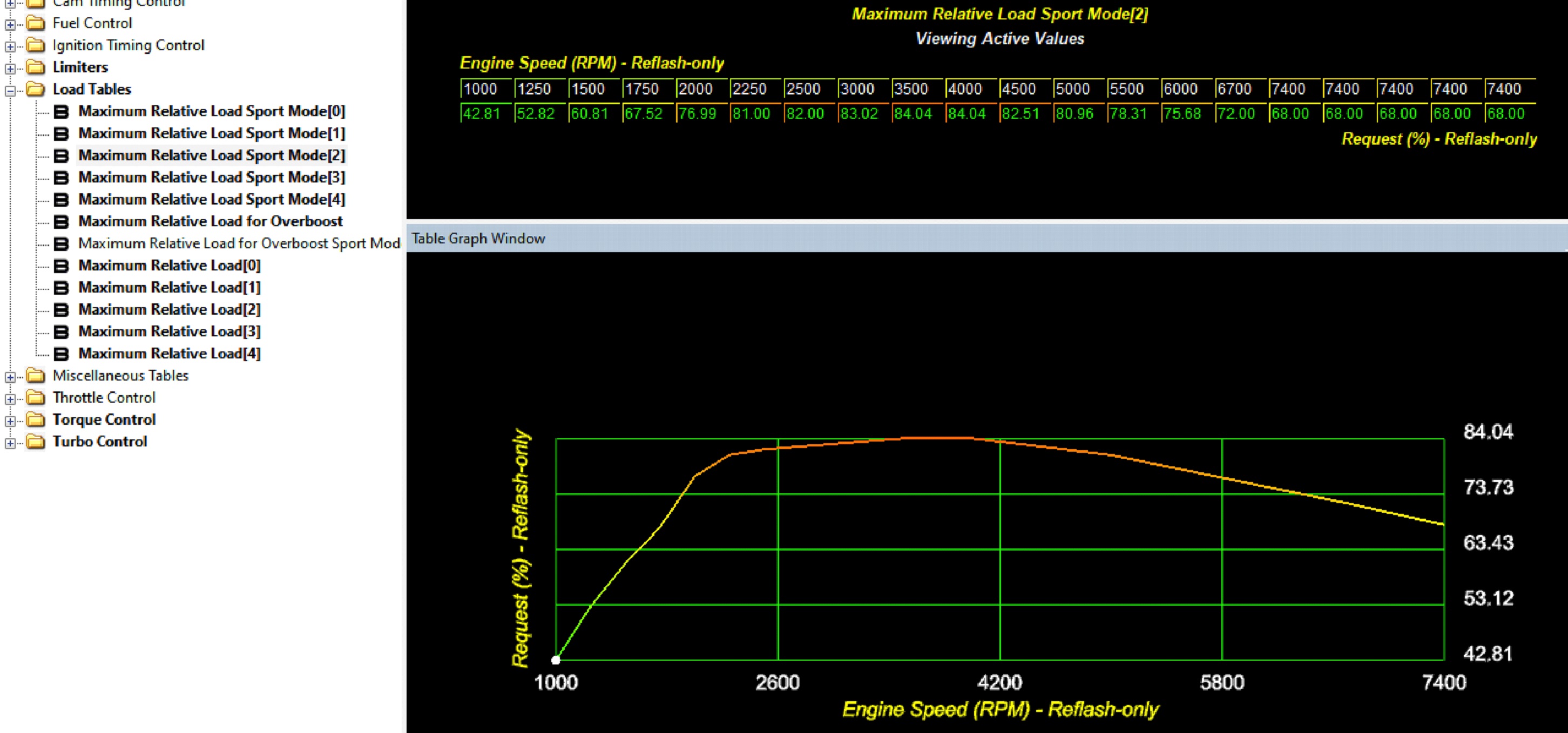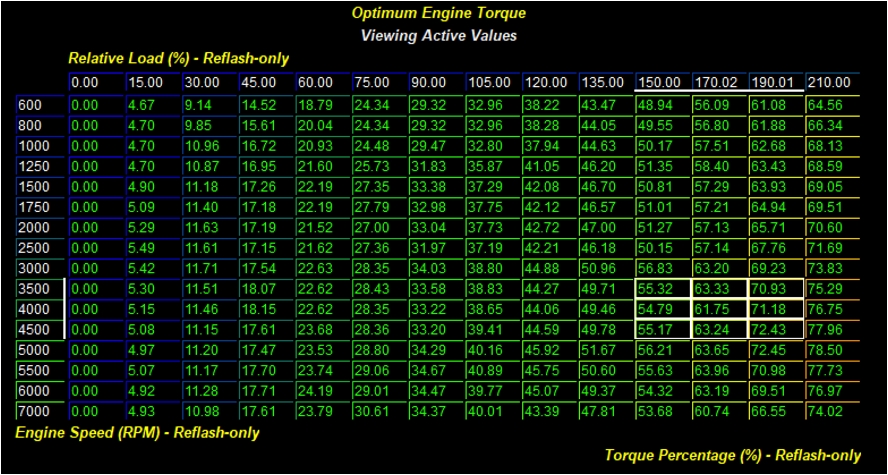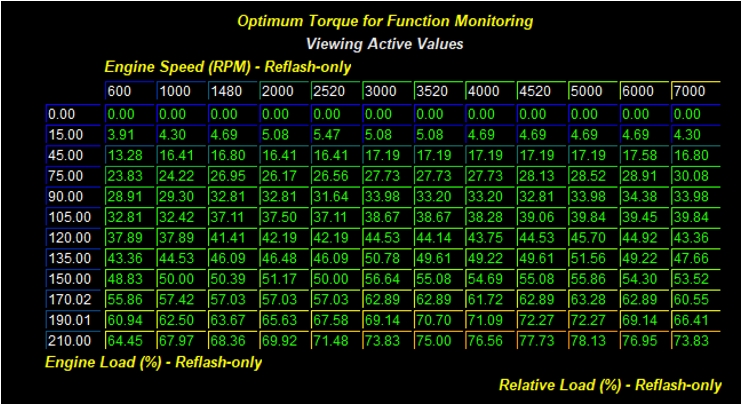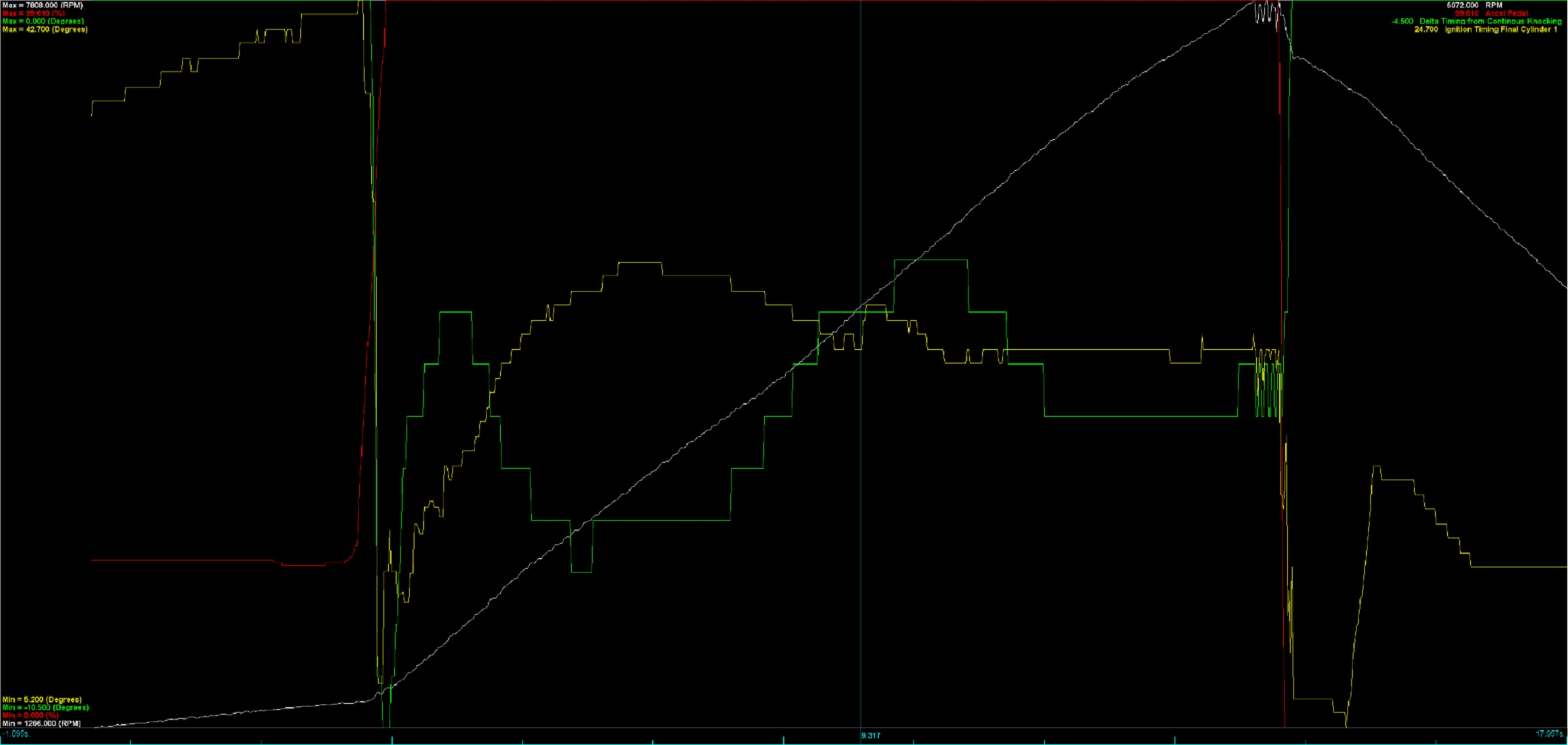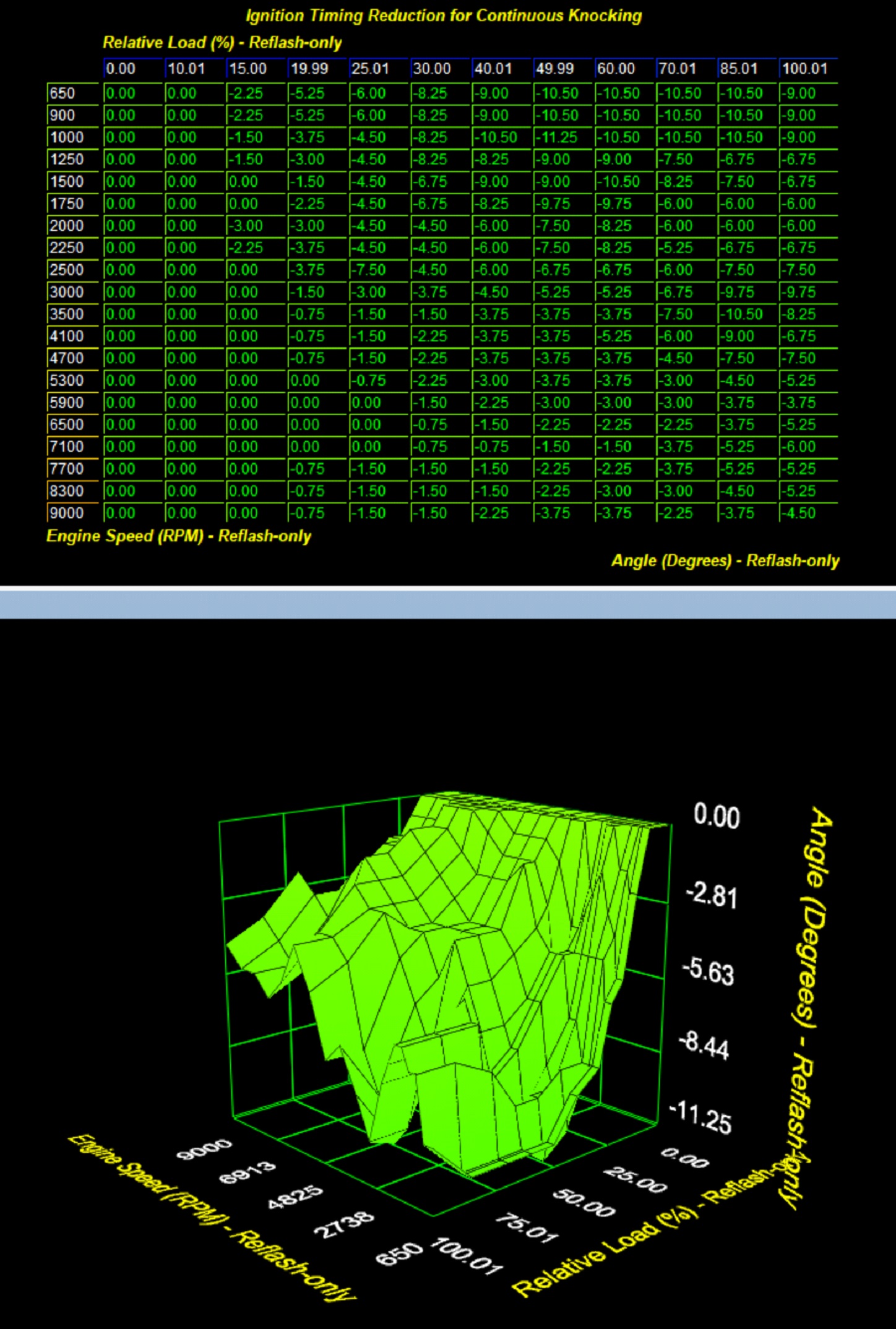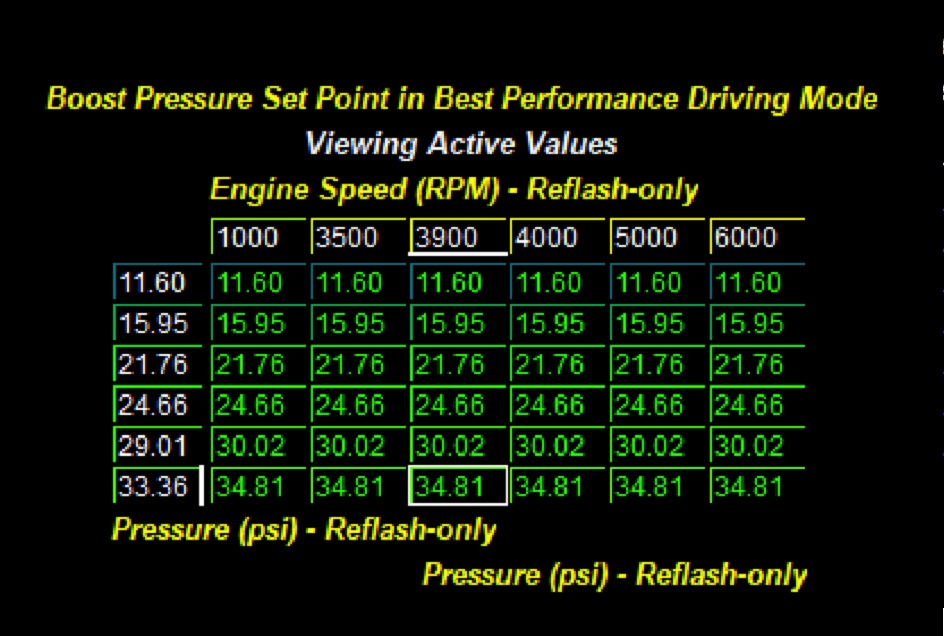9Y0 Cayenne (Base) Tuning Guide
- 2019-2022 Cayenne Base
Despite different engine configurations, the 9Y0 Cayenne vehicles all use the same ECU and same general control strategy. At this time, only the 9Y0 Cayenne Base is supported.
- 9Y0 Cayenne Base
- 3.0 Liter V6 with a single twin scroll turbo mounted to the top of the motor between the cylinder heads, also called a "Hot Vee" configuration for channeling the heat of the exhaust into the center of the V-Portion of the block
Factory Calibrations
The plot below shows the stock curves from the Base Cayenne. These cars make torque very rapidly, but is falls off quickly and they aren't as efficient at high RPM. As such, any attempts to increase power and hold out boost at higher RPM will typically just generate additional heat without increasing power.
Calibration Results
Keep in mind that the best and fastest way to evaluate your own calibration strategy is going to be to look at the COBB OTS maps as a starting point.
9Y0 Cayenne (Base) Tuning Guide
The ECU as a System
Porsche calibrations, regardless of ECU variants will require torque limits and targets to be adjusted (typically raised) to meat your goals. At the end of the day being able to adjust those tables and have everything work in concert is your goal. Within the range of Porsche vehicles there are a variety of tuning strategies which make achieving this goal a different process. This tends to mean that if you are an expert with 991.2 turbo 911 cars, everything will look somewhat familiar, but you'll still face a small learning curve in terms of exactly which tables require changing.
These ECUs have very well modeled tables looking for a fairly consistent level of vehicle operation. This means that in order to produce a finished calibration, you'll need to make a large range of changes. It's not possible to only change one parameter at a time and expect to make sustainable power. As an example, if you are working to optimize factory ignition timing or fuel, you will not see an increase of power in the presence of the factory torque limits and targets. In order to make power and tune the car the best way to start is to push the limits out of the way (but to a safe limit) in order to keep the vehicles behavior and targets consistent with the power you're targeting for your powertrain and fuel.
In order to preserve the balance of driveability and speed that the factory clearly worked so hard to achieve, it's recommended to minimize the table changes you do make. This seems counter intuitive when we just told you that you need to adjust more tables than you think, but if there is a change you feel may not be important or related to the desired behavior of the vehicle we recommend returning it to stock. This makes sure that the character of the vehicle can be preserved, and any undesireable effects from the complex interrelation between tables doesn't cause any issues.
Delta Timing from Continuous Knock
The newer operating systems used in Cayenne, Macan, and 4.0L NA Porsche applications have a new monitoring system labeled as Delta Timing from Continuous Knocking (DTCK). This table in the software acts similar to the DAM system in Subaru, as it is actively adjusting the allowed ignition timing based on a learned knock response (knock observed over time). While this table is able to be modified, we recommend leaving it stock as it is a clear safety system for the car that operates properly and shouldn't impact the ability to tune the vehicle provided the ignition timing values you target don't cause knock.
The monitor for DTCK is actually reporting the potential timing reduction that can be applied in the event that continuous knocking is recorded. It is NOT a measure of timing actively being removed. If you refer to the final ignition timing of any given cylinder in a datalog, you’ll see that it does not incorporate the output value from DTCK.
Related content
Copyright 2025 © COBB Tuning Products LLC. All Rights Reserved. | www.cobbtuning.com

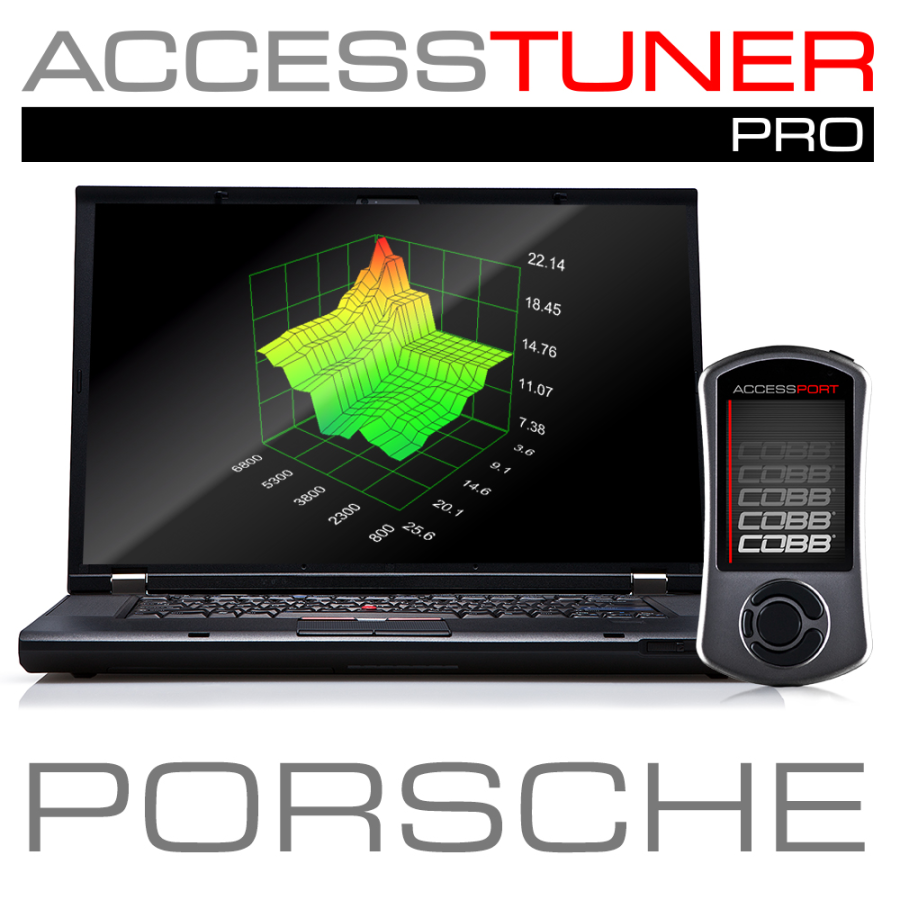

%20Porsc.png?version=1&modificationDate=1667846041018&cacheVersion=1&api=v2&width=402&height=250)
%20Porsc.png?version=1&modificationDate=1667846047273&cacheVersion=1&api=v2&width=516&height=250)
%20Porsc.png?version=1&modificationDate=1667846799506&cacheVersion=1&api=v2&width=562&height=400)
%20Porsc.png?version=1&modificationDate=1667846804553&cacheVersion=1&api=v2&width=558&height=400)
